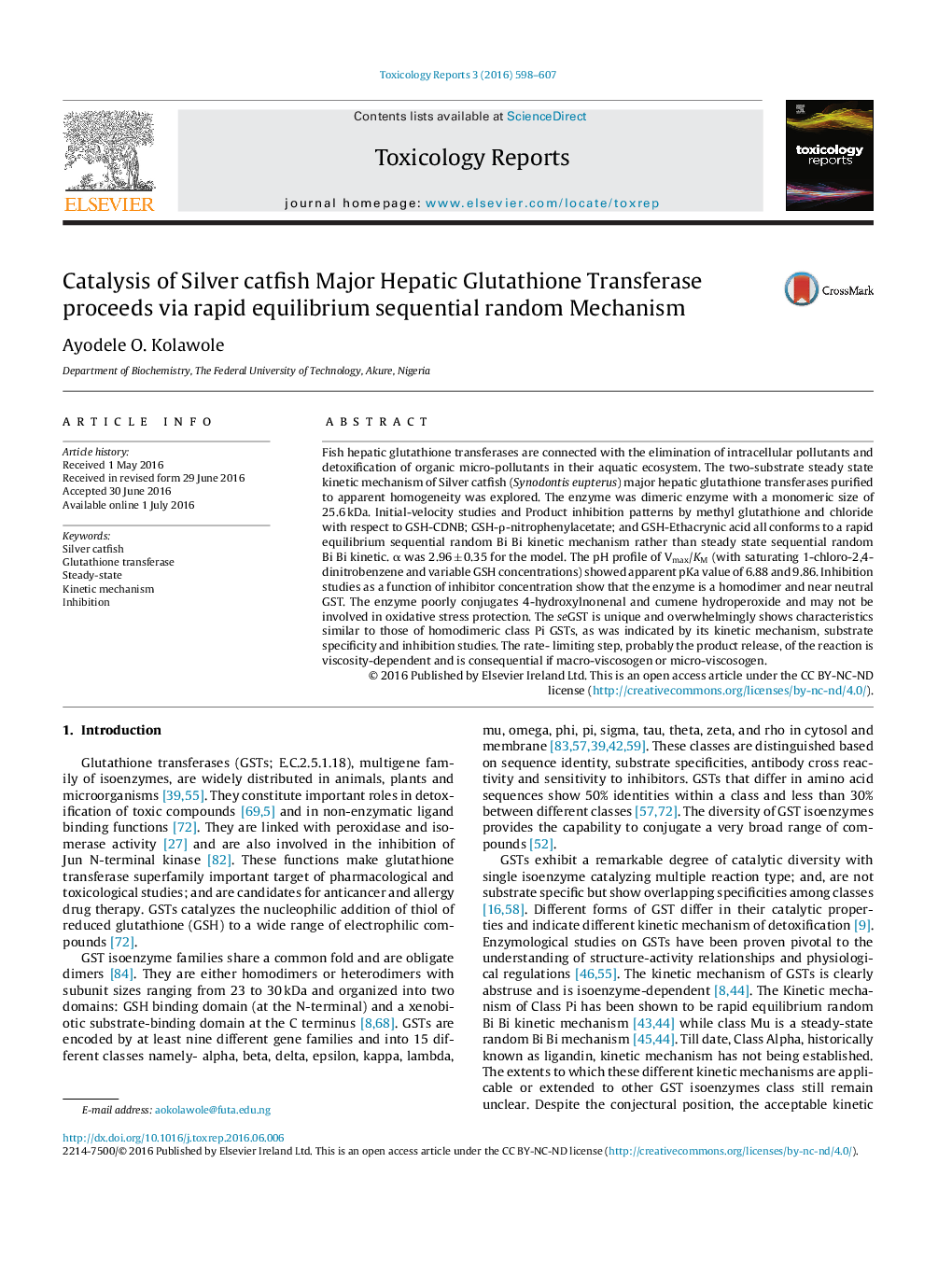| کد مقاله | کد نشریه | سال انتشار | مقاله انگلیسی | نسخه تمام متن |
|---|---|---|---|---|
| 2572169 | 1561191 | 2016 | 10 صفحه PDF | دانلود رایگان |
Fish hepatic glutathione transferases are connected with the elimination of intracellular pollutants and detoxification of organic micro-pollutants in their aquatic ecosystem. The two-substrate steady state kinetic mechanism of Silver catfish (Synodontis eupterus) major hepatic glutathione transferases purified to apparent homogeneity was explored. The enzyme was dimeric enzyme with a monomeric size of 25.6 kDa. Initial-velocity studies and Product inhibition patterns by methyl glutathione and chloride with respect to GSH-CDNB; GSH-ρ-nitrophenylacetate; and GSH-Ethacrynic acid all conforms to a rapid equilibrium sequential random Bi Bi kinetic mechanism rather than steady state sequential random Bi Bi kinetic. α was 2.96 ± 0.35 for the model. The pH profile of Vmax/KM (with saturating 1-chloro-2,4-dinitrobenzene and variable GSH concentrations) showed apparent pKa value of 6.88 and 9.86. Inhibition studies as a function of inhibitor concentration show that the enzyme is a homodimer and near neutral GST. The enzyme poorly conjugates 4-hydroxylnonenal and cumene hydroperoxide and may not be involved in oxidative stress protection. The seGST is unique and overwhelmingly shows characteristics similar to those of homodimeric class Pi GSTs, as was indicated by its kinetic mechanism, substrate specificity and inhibition studies. The rate- limiting step, probably the product release, of the reaction is viscosity-dependent and is consequential if macro-viscosogen or micro-viscosogen.
Journal: Toxicology Reports - Volume 3, 2016, Pages 598–607
